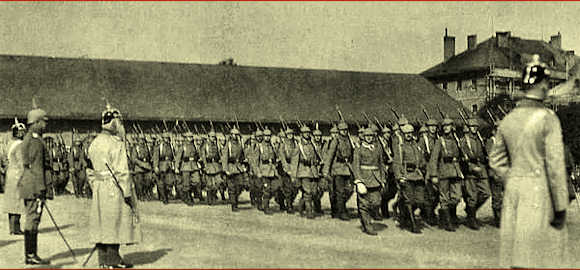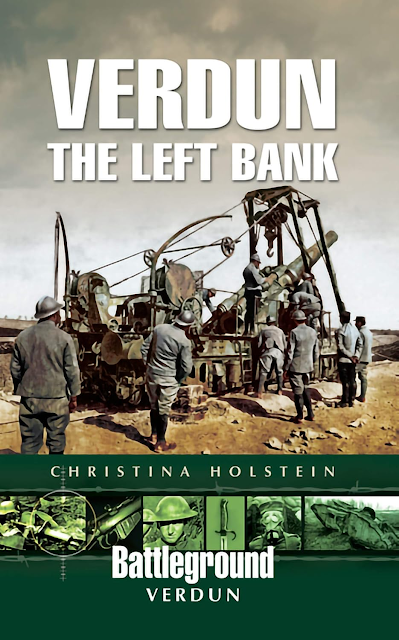By James Patton
This story begins with the Great Survey of the realm ordered by William the Conqueror in 1086. His agents visited every shire, compiled a list of property there and calculated the duties owed to the crown therefrom. This manuscript was originally known as the Liber de Wintoni (The Book of Winchester), where it was originally kept.
The name Domesday Book came into use in the 12th century because its determinations were deemed complete and final, like those described in the Last Judgment (Matthew 25:31 et seq.).
The manuscript is now held at the National Archives in Kew, London. It was first printed in full in 1783, and internet access became available in 2011.
Then enters into this story Arthur Mee (1875–1943), a self- described “Journalist, Author and Topographer.” His most famous work was The Children’s Encyclopedia (1908–64). In America it was called The Book of Knowledge, and every elementary school had at least one set.
In 1936, Mee began his The King’s England series, which ran to over forty volumes, covering every parish in every shire. The publisher advertised it as the new Domesday Book.
 |
| Arthur Mee |
In Enchanted Land (1936), the introductory volume to The King's England series, Mee wrote that a “Thankful Village” was one which had lost no one who served in the Great War. He was using the term village instead of parish, which was actually the basic unit of settlement in the UK at the time. In the course of his research, he identified 32 Thankful Villages. Through subsequent research, that number now stands at 53, with several contenders still being researched.
What now follows is extracted from a BBC presentation on 10 November 1917.
‘What seems like it should have been a cause for celebration was actually a source of embarrassment and shame for many.
Edward and Ann Jameson experienced a lot of heartbreak. Four of their 13 children died at a young age, then they watched four sons head off to fight the Germans. It seemed unlikely that they would all survive.
The eldest, Makepeace, was 23 years old when war began. He was wounded twice in 1916 and later hospitalized with influenza, but he survived. His youngest brother, Joshua, 16 at the outbreak, joined up later and was struck by shrapnel which remained in his leg for the rest of his life. With their brothers Michael and Ted all four came home, along with a fifth villager, Arthur Taylor.
So their home, Hunstanworth, a cluster of farms, houses and a church high in the moors of County Durham, had become one of the lucky few—a Thankful Village.
 |
| Distribution of Thankful Villages |
But as a blanket of grief shrouded thousands of communities, the Thankful Villages experienced a different emotion—shame.
"They were surrounded by villages where people were not returning," said the Rev. Michael Hampson, the vicar at St. John the Baptist Parish in Arkholme-with-Cawood, Lancashire. His parish is also on the list. All 59 villagers who went to war, out of 320 inhabitants, survived. It’s one of only two Thankful Villages in Lancashire.
"For example, just up the road in Whittington, the big landowning family there (the Dawson-Greenes) lost two generations in the war.
"That was typical around the country. For the Thankful Villages, it was almost as if they had not joined in the sacrifice. They celebrated the peace but felt like they had not paid the price." That feeling of shame lasted for decades.
"We started talking about it around the millennium and still then there were people saying 'no, we should not shout about this, we do not want to blow our trumpet over our embarrassing privilege'," the Rev. Hampson continued.
"There was a self-imposed silence and censorship; it was felt that it would be quite wrong to celebrate that as some kind of triumph."
Perhaps in part for this reason, it is only relatively recently that any attempt to find all the Thankful Villages has been made, the work being led by historians Norman Thorpe, Rod Morris, and Tom Morgan.
The first task was to decide how to define what made up a "village.” Thinking small, they identified about 16,000 of them that existed in 1914. "We have always looked for a definite community, not just a few houses or an isolated farm with two or three cottages for the help," Thorpe said. "A church, a school, a village hall, any sign of a social unit is what we look for."
Michael Dunne-Willows, PhD (Newcastle), is a mathematician employed by the UK’s Office of National Statistics who has extensively studied randomness, particularly in relation to lotteries. His professional curiosity was piqued by the historians' research, so he agreed to try to calculate the likelihood that a ‘‘village” would lose no one in the Great War. Was it statistically probable there would even be some Thankful Villages?
Of the seven million British who went to war, about 880,000 died (6% of the eligible male population). Simple division yields the result that if one went to war there was about a one-in-eight chance of being killed. Crunching the numbers much further, Dunne-Willows endeavored to account for all of the unknown variables.
One area of uncertainty relates to questions about the individual circumstances of soldiers and villages. "Perhaps the village of residence played a role in which area soldiers were deployed to," explained said Dunne-Willows. "This would result in some villages having a higher or lower probability of being ‘thankful’.
 |
| Somme Battlefield Memorial for the Accrington Pals |
Perhaps the fact that often groups of friends—football teams and the like—enlisted together played a role in predetermining their survival." Probably the most well known example of how this skewed casualty figures is that of the Accrington Pals, the 11th E. Lancs, who lost 235 members within 20 minutes on the first day of the Somme. As the brother of one of the soldiers would later recall, "I don't think there was a street in Accrington and district that didn't have their blinds drawn and the bell at Christ Church tolled all the day."
After some clever mathematical manoeuvring featuring various N values and D quantities, Dunne-Willows arrived at an answer for how many Thankful Villages he reckons there should have been.
That number is 22. Out of about 16,000.
As mentioned above, thus far Thorpe’s group has identified 53 Thankful Villages in England and Wales—none have been found in Scotland or Ireland as yet. Is Dunne-Willows’s finding a statistical anomaly? The faithful might call it a miracle.
Of course just because everyone came back alive, this does not mean they were unaffected by the experience.
A collection of coins belonging to John Hugill, one-time blacksmith in Catwick, is testament to this. All 30 men who went to war from the East Yorkshire village gave him a coin which he nailed to his doorpost below a ‘lucky’ horseshoe. All of them came back but one man "left an arm behind", so Hugill cut a notch out of one coin to represent the lost limb.
 |
| Catwick's Luck Horshoe and Coins |
There is one simple factor that the historians and the statistician do agree made a village “Thankful”—luck. "We have studied this from several aspects," Thorpe said. "The only conclusion we can reach is that the safe return of all those who served from a particular village was simple chance, like the casting of a die."
With the passage of time and the consequent change in attitudes, the Thankful Villages no longer feel shame.
No Thankful Village sent more residents to war, as a percentage, than Knowlton in Kent. The 12 who went—and came home—represented 31% of the 39 villagers, and in the Twenties the Weekly Dispatch declared Knowlton the “bravest village” in the realm and put up an impressive stone monument. While some of the other places do not even have a war memorial, today their “Thankful” status is recognized by signs, plaques, and marker stones.
Between 2016 and 2018, English singer-songwriter Darren Hayman released a trilogy of albums inspired by and written in-situ at the then-54 Thankful Villages, including Welbury, North Yorkshire, whose status is now in doubt.
Postscripts: Amazingly, 14 of the 53 Thankful Villages are also termed “Doubly Thankful,” having lost no one who went off to WWII as well. Arkholme, Butterton, and Catwick are among these.
 |
| Butterton's 15 Survivors of the First World War |
To date there has been no effort to identify all of the WWII Thankful Villages. Since the number of those killed in WWII was less than half that of WWI, it is likely that there would be many more than 53.
The King’s England books are still available, published by The King’s England Press Ltd., who had acquired the rights from the original owners in 1989.
Sources include the BBC, Staffordshire Live, The Western Front Association (UK), Sky History and the Daily Mail.



































